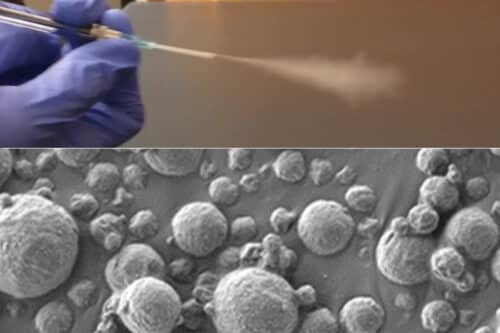MIT researchers have developed a technology that simplifies lung cancer detection by inhalation of nanoparticles followed by a quick and accessible urine test for everyone.

MIT researchers have created a technology that could make diagnosing lung cancer as simple as inhaling nanoparticle sensors and then taking a urine test. These nanosensors, delivered via an inhaler or nebulizer, react to cancer-related proteins in the lungs and produce a signal in the urine, detected by a paper test strip. This method could supplement or replace the current standard, low-dose CT scans and is especially beneficial in regions with limited access to such scanning equipment.
Inhalable particles
Researchers have developed sensors made of polymer nanoparticles with a DNA barcode reporter that releases when the sensors meet proteases, enzymes common in tumours. These reporters then gather in the urine for excretion. There are two methods for administration: an aerosolized solution for a nebulizer and a dry powder for inhalers. Once inhaled into the lungs, the particles interact with proteases. Tumours often have proteases that help cancer cells move by breaking down matrix proteins. This interaction causes the DNA barcodes to separate, enter the bloodstream, and eventually appear in the urine.
The researchers developed a lateral flow assay for detection. This method uses a paper test strip to identify DNA barcodes, each linked to a specific protease, without needing urine sample treatment. Results are available about 20 minutes after sample collection, providing a simpler diagnostic approach for detecting lung cancer.
Accurate diagnosis
The team tested their diagnostic system using mice engineered to develop lung tumours. The sensors were given 7.5 weeks after tumour formation, correlating with early-stage cancer in humans. In initial experiments, they measured 20 sensors targeting different proteases. Using machine learning analysis, they identified a set of four sensors for diagnostics. This set was then used to detect early-stage lung tumours in the mice.
More sensors might be needed for human application for diagnosis, possibly using multiple paper strips, each detecting four DNA barcodes. The researchers plan to test the effectiveness of these sensor panels on human cancer biopsies and aim for future clinical trials.








